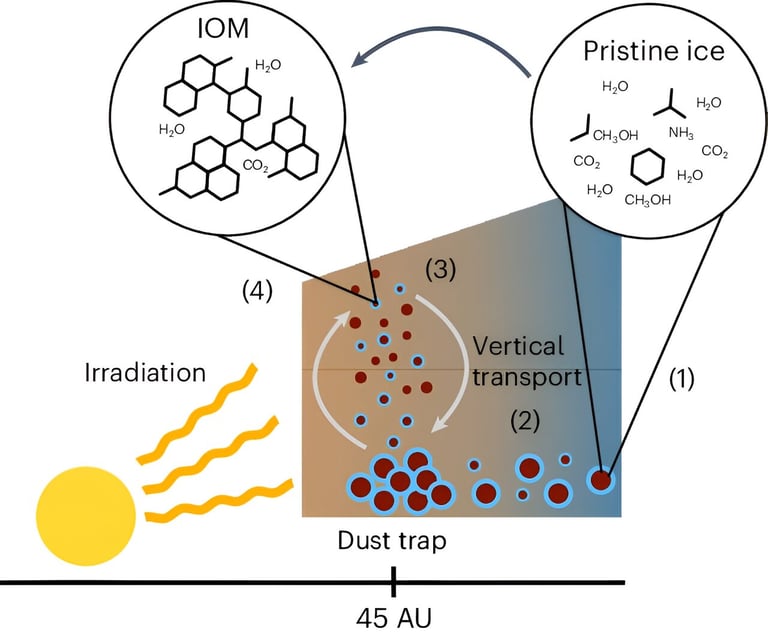Breakthrough in Organic Molecule Formation Around Young Stars Could Unlock Secrets of Exoplanet Habitability
July 30, 2024
An international research team led by the University of Bern has discovered how organic macromolecules can rapidly form in gas and dust disks around young stars, which is crucial for understanding habitability on exoplanets.
Research suggests that complex organic molecules necessary for life may form in 'dust traps' within protoplanetary disks around these young stars.
Dust traps enable the accumulation of grains, reducing the likelihood of destructive collisions and facilitating the formation of larger macromolecules.
Intense starlight from infant stars can irradiate dust and ice in these dust traps, allowing for rapid formation of carbon-containing macromolecules.
The study indicates that heavy radiation from stars plays a crucial role in the chemical processes that lead to the formation of complex organic molecules.
The researchers found that in dust traps exposed to heavy radiation, complex organic macromolecules can form rapidly, potentially within just a few decades.
The findings were published in the journal Nature Astronomy on July 30.
Organic macromolecules are essential for the carbon and nitrogen composition necessary for life on Earth.
The researchers utilized observation-based computer modeling to explain how these macromolecules can form rapidly.
Chondrites, created from accumulated dust and small particles in the protoplanetary disk, are theorized to have delivered essential elements for life to Earth, including carbon, nitrogen, and oxygen.
Future work will investigate how different dust traps respond to radiation and moving dust flows to better understand the potential for life around various exoplanets and stars.
Future research will involve further laboratory experiments and observations to validate the models developed in this study.
Summary based on 3 sources
Get a daily email with more Science stories
Sources

Space • Jul 30, 2024
The building blocks of life can form rapidly around young stars
Ground News • Jul 30, 2024
Astronomers explain rapid formation of organic macromolecules in protoplanetary disks around young stars